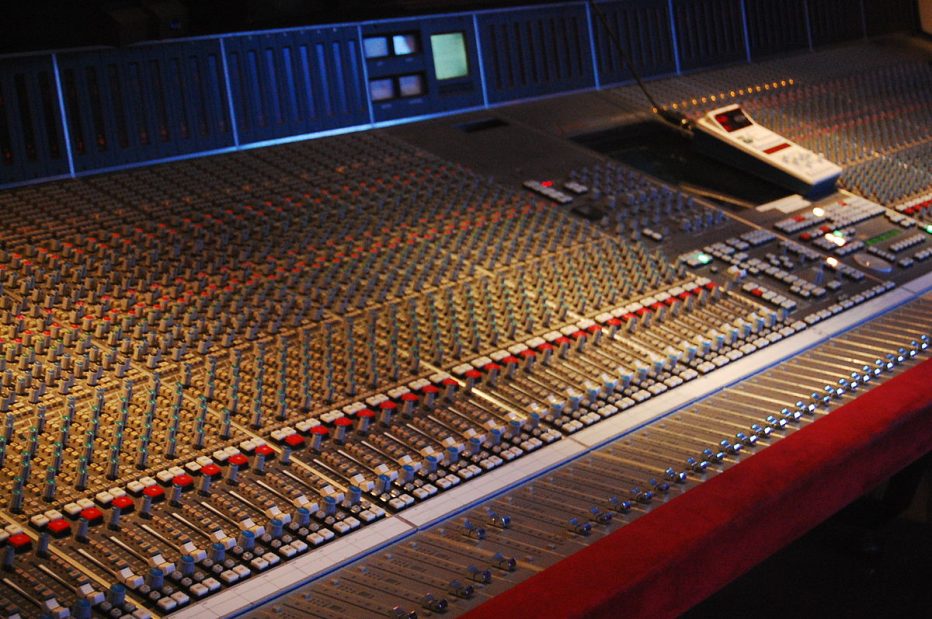Basic Guide to Mixing Desks
In this article, I’ll be presenting you with a complete beginner’s guide to working your way around small, basic mixers. This is the first article of several on the subject of mixing desks, this article serving to introduce basic concepts that will be expanded upon in the subsequent articles.
Why do I need a Mixing Desk?
Mixing desks, also known as mixing consoles, sound boards or simply ‘mixers’, can have a wide range of capabilities and applications. They, however, sever serve the same basic purpose: They combine a number of signals together into one signal known as a ‘mix’.
To give a practical example: You are providing sound reinforcement at a business conference for a number of panellists. You have four microphones, one for each panellist, and a speaker system. You require the four microphones to be amplified over the speaker system. However, it only has a single input. To provide a solution to this, you use a mixer with four ‘inputs’ and one ‘output’. This combines the signals from the four microphones, going in via the inputs, into a single mix which is then sent to the speaker system via the output. All mixers, from the most basic to the most complex, share this same capability.
A Simple Mixer: Key Concepts
The input section
A mixer will have a number of input ‘channels’, each of them taking a single audio signal which is then combined with the signal from the other channels and send to the output as explained above. On a typical mixer you can identify the channels by a series of vertical strips running down the mixer from top to bottom. At the top of each channel there are the physical sockets to connect various audio devices to the mixer. Mixers tend to have two types of inputs: 3 Pin ‘XLR’ sockets, commonly used to connect microphones, and ¼” ‘jack’ sockets for connecting devices such as CD Players, iPods and Laptops. Mixers will feature at least one stereo channel with pair of ¼” jack or phono sockets for connecting stereo signals, i.e. signals comprised of a separate left and right signal.
The channel strip
Below the input sockets you find a column of rotary knobs. Each of these knobs controls a certain parameter which affects the signal in some way. Let’s examine each control in the order you would find them on a typical mixer.
- Gain: Microphones produce a very weak signal which requires amplification before the mixer can work with it. By turning the up the ‘gain’ you increase the amount of amplification applied to the signal. Some fine tuning is required here: Too much and the signal will distort and not enough and it will be too quiet.
- EQ: An audio signal is made up of many different frequencies. The EQ controls on a basic mixer are very much like you might find on a home hi-fi system, there is a single knob to control the level of the bass, usually labelled as ‘low’, and another knob to control the level of the treble, usually labelled as ‘high’. When the knob is turned to 12 o’clock the signal is not affected. Turning it clockwise increases the level of that frequency and turning it anticlockwise decreases or ‘augments’ the level of that frequency.
- Aux Send: Most mixers will have at least one ‘auxiliary send’ output, with auxiliary often being shortened to ‘aux’. The Aux knob controls the level of the signal that is split off and sent to the aux output. This gives the user the ability to create a separate mix with its own balance of signals from each channel, either for the purpose of sending the signal to an effects unit or to a monitor speaker for a performer on stage. This control is often labelled as ‘FX’ on small mixers and as will be detailed later on in the article this mix is often sent directly to an internal effects unit. However it will usually also go to a physical ¼” jack output.
- Pan: In the simple example given above the mixer produced a single ‘mono’ output. The reality is however most sound reinforcement systems today are in stereo: You have a separate left and right speaker and therefore even the simplest mixers will have a corresponding left and right output. The ‘pan’ knob directs the signal to the left output, the right output or anywhere in between. This works similar to the EQ control detailed above: aA 12 o’clock the signal is sent equally to each output, by turning it anticlockwise it is sent more to the left output and by turning it clockwise it is sent more to the right. The pan knob is sometimes labelled as ‘balance’ but serves the same function.
- Level: The level control adjusts the level of that channel in the mix or, to put it another way, how much of the audio signal from that channel goes to the outputs. On most small mixers this control will be a rotary knob, as described above, however some may have a fader, a sliding control on a vertical strip. For this reason the level control is often referred to as the ‘fader’.
The output section
The mix, i.e. the combined signal from all the channels, goes out of the mixer through its outputs. All mixers will have a ‘main out’, a pair of ¼” sockets for left and right and a headphone or ‘phones’ output, a single 1/4″ jack that carries both the left and right signal to a pair of headphones, much like the smaller jack sockets you find on a MP3 player or laptop. There will have a knob or fader to control the overall level of the mix, sometimes referred to as the ‘master fader’. There will be another knob for the phones output so its level can be controlled independently. As mentioned previously there will usually be a mono ¼” jack output for the aux send, or multiple sockets if there are multiple aux sends.
Most small mixers will have a ‘tape in’ and a ‘tape out’, a dual pair of phono sockets. These labels are taken from the days when mixers were used with tape machines. At this point it’s simply worth mentioning that the tape in can be used as an additional stereo input channel and the tape out can be used as an additional main out. In the next article we will discuss this in more detail and how it relates to the USB connectivity on modern mixers.
And there you have the basic functions of a mixing desk. Even on the largest, most expensive and difficult to use models you will see the same labels, controls and sockets. Before ending this article however it’s worthwhile looking at a couple of special features some mixers may have.
Effects
As mentioned previously small mixers often have an inbuilt digital effects unit. Typically there will be a knob to select which effect, or variation on effect, is in use. The ‘FX’ knob on each channel, which functions the same as an aux send, controls how much signal from that channel is sent to the effects unit. Then the output of the effects unit, the ‘wet’ signal, is then combined with the mix so it is heard alongside the original ‘dry’ signal. An example of a small mixer with effects, is the Alto Zephyr ZMX122FX
Powered Mixers
Normally the output of a mixer is at ‘line level’, i.e. it is at an acceptable level for audio devices to work with but not high enough to drive speaker systems. Powered mixers have a built in amplifier making it suitable for driving passive speakers. Usually these outputs will be on a pair of ¼” jack outputs, locking speaking sockets or bare wire connectors. Examples of these desks can be found in the powered mixers section of the Pro Audio Centre website
This article was written by Kris Heath, PA System specialist at Proaudiocentre.com.







